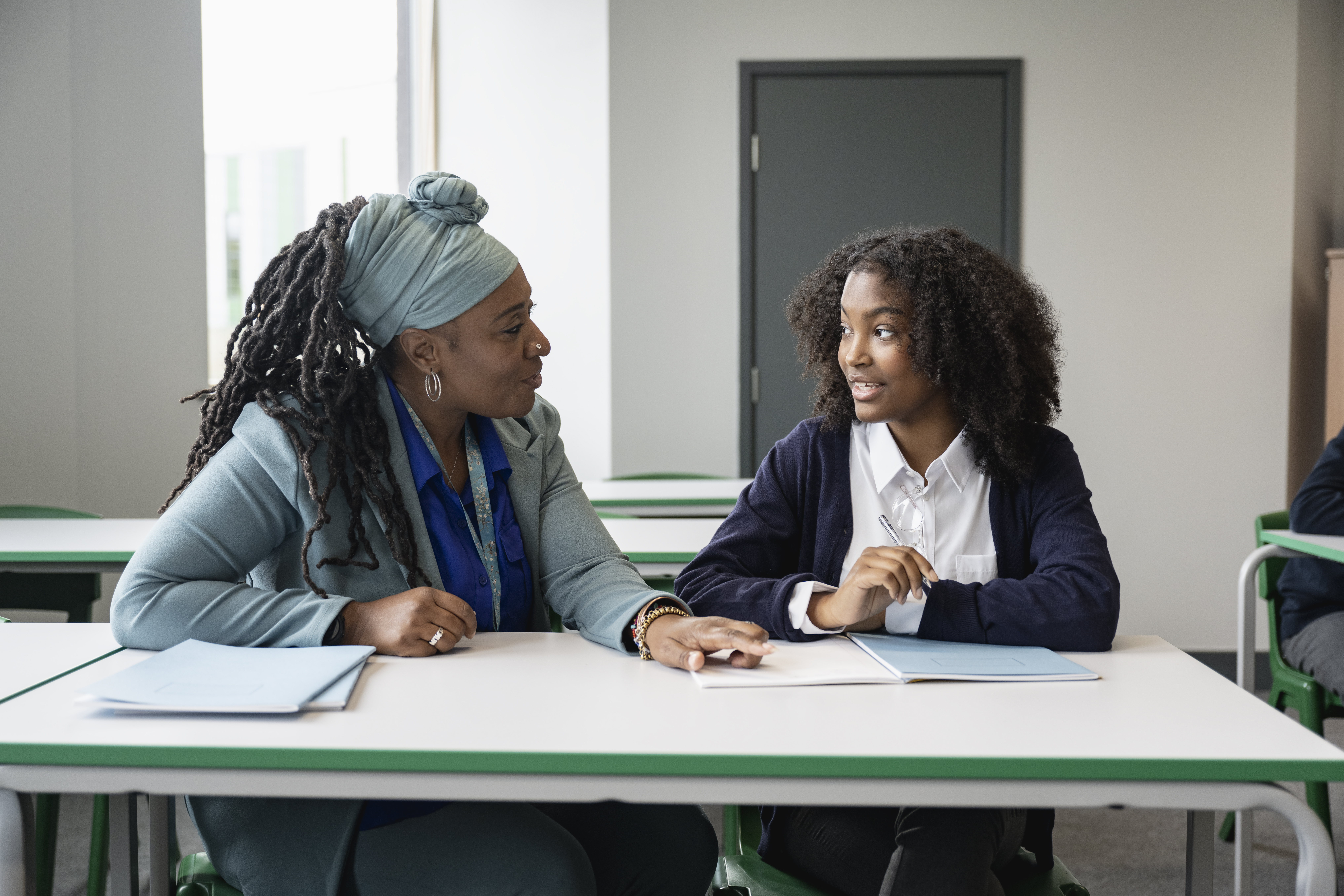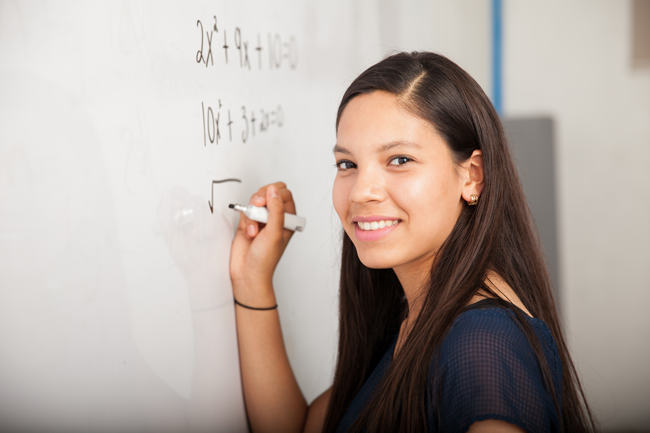Blog
Healing and Compassion: Developmental Relationships through a Restorative Mindset
Today’s educational landscape desperately needs healing and compassion, especially for Black youth. As a former high school English teacher at a school that embraced social justice pedagogy, I know firsthand the importance of making students feel supported, cared for, considered, and, most importantly, loved. My school prioritized relationship building and holistic wellness among students and trained teachers in restorative justice. Unfortunately, many students, specifically Black students, attend schools where educators’ instruction and pedagogy are not rooted in restorative justice, leaving students to feel neglected, silenced, and criminalized.
Concerns about disparities in Black student outcomes are significant and well-documented. For instance, in 2018, Black students were 3.2 times more likely to be suspended or expelled compared to their peers. (Government Accountability Office, 2018). Additionally, Black students often face reduced access to essential resources, such as supportive adults, social-emotional learning opportunities, and rigorous instruction, compared to White students. Teachers' implicit bias and social-emotional competence (SEC) play a crucial role in how they perceive and respond to student behaviors, often contributing to the disproportionate criminalization of Black students (Kupchik & Henry, 2022). This hyper-adultification and over-criminalization highlight the urgent need for teachers to foster positive relationships, enhance empathy, and actively work to reduce harm in their interactions with students.
What is Restorative Justice?
Restorative Justice (RJ) is an alternative approach to discipline that offers accountability and system change (Lodi et al., 2021) and is rooted in a growth mindset philosophy (Dweck, 2015).
Restorative Justice in schools “represents a transformative approach to discipline that focuses on repairing harm and rebuilding relationships rather than punishing students for misbehavior” (Croteau, 2024). RJ fosters community, “creating a space where every student feels safe; where students and teachers work together toward a common goal and celebrate collective and individual wins” (Calm Classroom, 2014). Community-building also includes goal setting and incorporating deep reflection to monitor behavior.
Anyone (i.e., including staff) can cause relational harm in school settings through personal biases, including racial biases, fragile or hostile relationships, or unfair use of school policies. Restorative justice aims to restore balance among all stakeholders involved, particularly teachers and students who are harmed. It actively involves students and teachers in rebuilding relationships and addressing the enacted harm. RJ also acknowledges the need for educators to commit to actions that repair harm (vs. those that only punish) and opens the door for educators to facilitate and model humility when they cause relational harm. This gives students leadership and power over their experiences and healing, even when the adults in the building may have caused harm.
An RJ approach to build relationships between students and educators can elevate restorative practices and offer the healing and compassion that young people need. The Developmental Relationships (DR) framework identifies elements that can help cultivate positive relationships between students and educators. Two key DR elements that are especially relevant for RJ are expressing care and sharing power. Expressing care shows youth they matter by listening to and honoring their stories, struggles, and strengths. It requires building mutual trust and believing in students. Sharing power prioritizes respect toward youth and gives them a say by recognizing and celebrating their autonomy. By integrating restorative justice practices with a developmental relationship framework, educators can create and maintain meaningful and sustained relationships.
Restorative and Developmental Relationships
Restorative practices are a commitment to expressing care deeply. For example, restorative practices include but are not limited to healing circles to express emotions, promote love, forgiveness, and empathy, space to acknowledge the harm caused by students and teachers, and restorative language rooted in love and faith in one’s ability to grow. This practice requires teachers to share power and make space for students to share their truth- a practice that has been shown to improve relationships and youth outcomes (Scales et al., 2020). It also requires educators to view students as young people learning to self-regulate while simultaneously learning academically. Expressing care deeply requires an understanding of trauma, students’ triggers, and the context that precipitated the harm enacted on students to foster trust.
Given that Black students are criminalized and penalized at higher rates than their counterparts, educators and school personnel must build restorative relationships to protect and humanize students. Sharing power is an integral part of this. Sharing power includes acknowledging and celebrating students’ funds of knowledge (Moll et al., 2009) and utilizing their capital (Yosso, 2005) in the curriculum. Sharing power is about centering students’ voices, taking them seriously, treating them fairly, including them in decisions, and creating opportunities for them to take action. For example, when I taught, I cultivated relationships with students through restorative justice practices centered on inviting students to the learning process. I utilized a restorative justice approach rooted in sharing power throughout my instruction and pedagogy. Students voted on the topics and assignments they wanted to learn about. I implemented the Mastery Learning and Grading (MLG) system, which eliminated averages and allowed students to demonstrate mastery of a topic multiple times until they succeeded. In this classroom structure, students could identify what gaps they were missing for themselves while also identifying what skills they needed to focus on. Embracing shared power in the classroom requires intentionality in the design of the curriculum and classroom structure to meet the needs of various learners.
As administrators and educators consider their approaches to healing and compassion for students who are historically marginalized, restorative justice practices may be a solution to consider. Below are three additional ways to engage in developmental relationship-building and restorative practices to cultivate positive relationships.
A deeper level of care.
Teachers must show deep care to foster relationships that can withstand conflict. Caring for students requires supporting their emotional intelligence development. Educators should be in community with students rather than dismissing them while they are actively learning. Additionally, educators must express the belief to each and every student that they will grow and be successful, consistent with two other DR elements: challenging growth and expanding possibilities.
Kind and positive communication.
To develop trust, educators must speak to students with care and intention. Speaking with care includes being mindful of tone, body language, and cadence when talking with students. Students can hear and feel when teachers speak from the heart or contempt. Teachers must also practice transparency. Students have more trust in educators who clearly explain their classroom systems and assignments and actively seek student feedback. An invitation to help cultivate the learning environment creates a democratic classroom where students can be facilitators, voters, and community members and is an expression of sharing power. One way to ensure students are invited in is to develop class community agreements to outline norms and expectations and construct tiered levels of support. Community agreements can also outline ways to hold each other accountable when agreements are broken. Developing levels of support ensures students feel supported and not criminalized.
Open up.
When teachers share more about themselves, students feel more connected to them. By humanizing themselves, teachers create an environment where students feel encouraged to do the same, leading to greater safety, openness, and trust, which is an integral part of expressing care. I recommend creating daily opportunities for students to share their thoughts and feelings to facilitate this. Since life events are frequent and unpredictable, regular chances to express their ever-changing emotions and needs are crucial. This continuous communication fosters healing and compassion, allowing teachers and students to better understand each other's experiences and provide the necessary support for success and emotional well-being. This approach emphasizes wellness and support within the evolving relationship.
In conclusion, integrating Restorative Justice with the Developmental Relationships framework offers a transformative approach to supporting marginalized students, particularly Black youth. RJ practices foster a nurturing and inclusive classroom environment by focusing on expressing care and sharing power. This approach helps address inequities, promotes emotional well-being, and strengthens connections between students and educators. Adopting these practices can lead to more supportive, empathetic, and effective educational experiences for all students.
Keara Williams, M.Ed., is currently pursuing her doctoral degree at the School of Education and Information Studies, University of California, Los Angeles (UCLA). Her research centers on Black third spaces and Black joy within the context of public schools. One of the central tenets of her research is the challenge to deficit narratives that often overshadow discussions of Black youth experiences. Keara is one of Search Institute's 2024 Summer Scholar Fellows.


.png?width=2560&height=1000&name=DR%20Framework%20Resources%20CTA%20(2).png)
